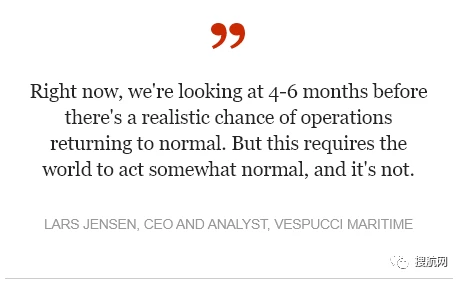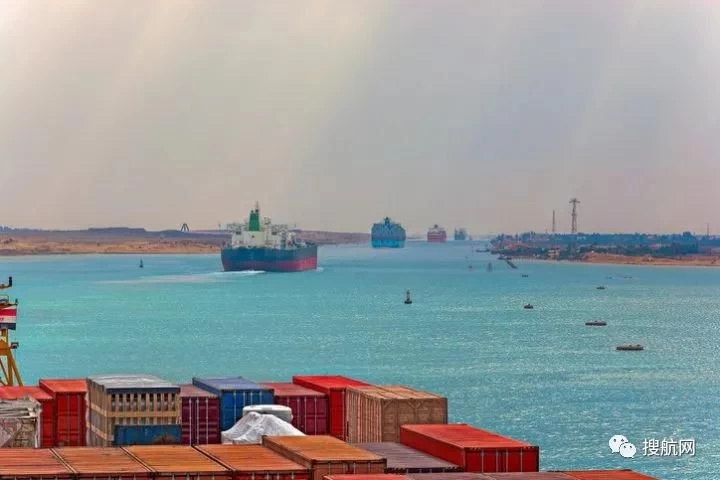The recovery of the container market may continue until 2024, with strong demand, shortage of containers, high freight rates and congestion delays becoming the "new normal"
Jim
Sunny Worldwide Logistics
2021-05-07 11:35:20
Since the second half of 2020, soaring demand in the container market and shortage of containers have greatly pushed up freight rates and caused widespread congestion in major ports around the world. The container shipping market is moving towards a "new normal". The high freight rates and the cyclical rebound of the market may continue for several years. Both shippers and logistics companies may face difficult times. Lars Jensen, an analyst at Vespucci Maritime, a maritime analysis agency, said that shippers and logistics companies will face a series of difficult years. The cyclical rebound before 2024 will be conducive to the stability of high freight rates and benefit container shipping companies.

In a webinar held by DSV Panalpina on Tuesday, Jensen evaluated this rather chaotic container market. So far, 2021 has been a record year for container shipping and an expensive year for shippers. He pointed out that the "new normal" of the container market is mainly the result of the congestion of the Suez Canal and the pandemic of the new crown virus. “At present, it takes 4-6 months for us to have a real chance to return to normal operations. But this requires the world to be in a normal state to some extent, which is not the case.” Jensen said, “When the demand is extremely strong, Container liners are in the process of digesting excess capacity. For a long time, excess capacity has been a feature of the container market to cope with congestion."

▍Periodic rebound In the current situation, the number of ships planning to enter the market is much smaller, and demand will continue to soar. Jensen emphasized that the ships currently ordered to meet the growing demand will be delivered before 2024. This also means that the container industry will face a cyclical rebound, which will benefit container liner companies and make customers more expensive. This trend can be felt in logistics companies such as DSV. Anders Oldenborg, director of product shipping for DSV Air & Sea, described the period of December, January and February as "crazy, which we have never experienced." The disruption of the Suez Canal at the end of March exacerbated the misfortune.

He said: “Due to insufficient capacity, everything can’t work. There are not enough containers to meet the demand we have seen. The carrier is fully loaded by June.” He added that, therefore, DSV has begun to consider chartering a ship. Respond to current market pressures. Oldenborg said: "We have no intention of operating container shipping, but at the same time, when we encounter challenges like the present, we feel the need to find available alternatives." Regarding DSV’s mid-term report for the first quarter of this year, its CEO Jens Bjørn Andersen emphasized that the current high price and low quality situation is unfortunate for the shipper. "This is really an incredibly bad combination. Freight transportation is more expensive than ever, while the quality of shipping services is worse than ever." Andersen said in the interim results report. "From what we see in the market, it is not unimaginable that the abnormal situation will continue for the rest of the year. Then we will see what else will happen."
▍Maersk will improve shipping schedule Looking at the market from the perspective of container liners, the situation is obviously more optimistic. These include Maersk, the world's largest container shipping company. Maersk had already raised its 2021 performance level before releasing its first-quarter performance report, and the group now expects to obtain operating profits of between US$13 billion and US$15 billion. In addition, Maersk CEO Søren Skou believes that this year's schedule will be greatly improved. At present, it is difficult for most container ships to arrive on schedule, and more than half of Maersk’s ships arrive late, but its CEO Søren Skou still expects the situation to improve significantly this year. He hopes that the impact of the Suez Canal interruption will end as soon as possible. SørenSkou and Maersk firmly believe that the service level of the container market is about to improve significantly. The container market is characterized by environmental chaos, which results in port congestion and delays, causing great inconvenience to customers.

As early as February, Skou believed that the level of service provided was too low and that the situation must be improved immediately. At that time, he was fairly certain that Maersk could increase the on-time schedule rate to 85% to 90% by the end of 2021. Skou said that at present, more than one-half of Maersk’s fleet continues to arrive at its destination later than expected, and the time of calling at the port is 12 hours later than expected. According to data from Sea-Intelligence, the on-time rate of the container industry in March was only 40.4%, and Maersk even led the industry with a 48.7% on-time rate. In addition, rising freight prices led to a substantial increase in the revenue of container liners in the first quarter. During this period, Maersk’s marine business increased by 5.7%, while the average freight increased by 35%. Overall, the quarterly profit is almost equal to the full-year performance for 2020. Skou believes that congestion is attributable to the booming world economy. He exemplified this point. He pointed out that on the west coast of the United States, Maersk’s ships had to wait an average of 16 days before they could berth and unload their cargo. "When the ship is there to wait for more than 16 days, this is a huge problem for our customers because we cannot sail on time, which makes it more difficult for customers to ensure that the goods they want to put on the shelves can arrive on time. At least that’s possible. Said that the situation is a mess and it will take some time to overcome it."



















